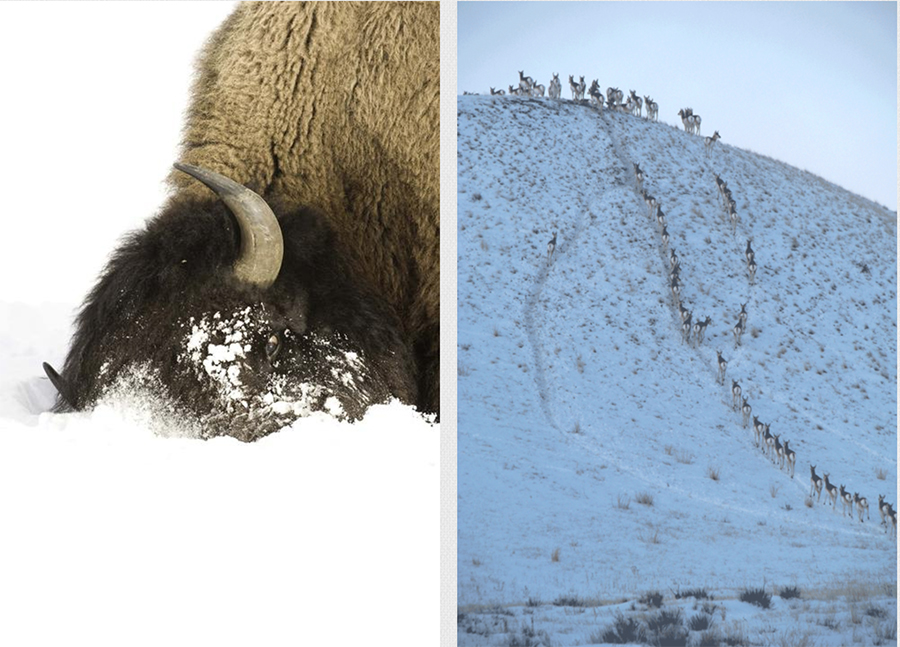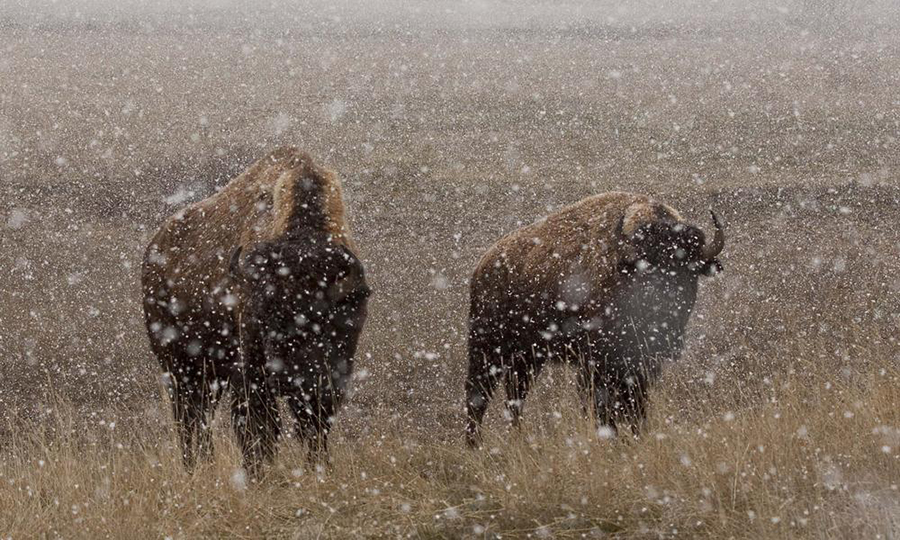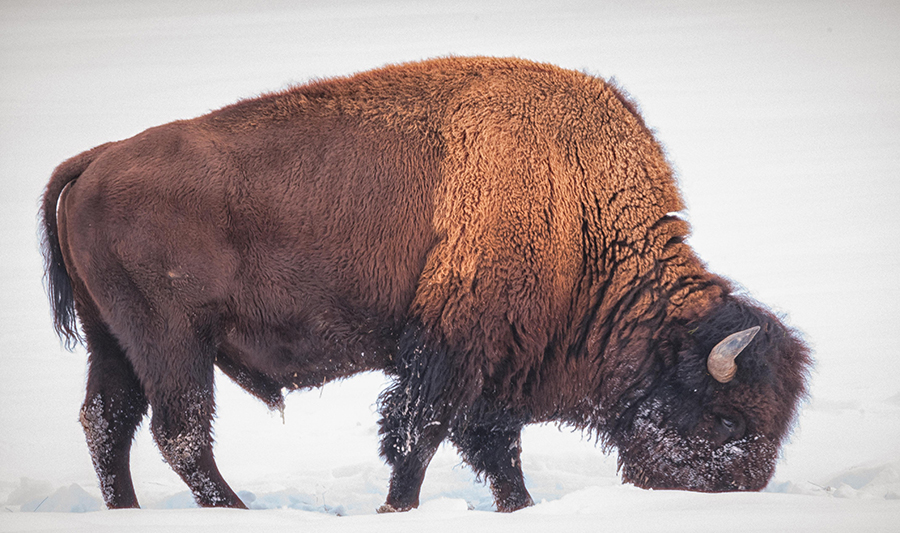<span style="color: #808080;">Bison do not move south when the winter weather dips below zero and the bitter winds whip across the plains.
Bison weigh upwards of 2000 pounds, feed on grasses and sedges year-round. When the deep snow blankets the lower elevations, bison use their heads as a shovel to plow (sort of) aside the accumulation to reach the grasses. Watch film below.
And they make little fuss about the types of grass they eat, making survival a bit easier.
The hump on bison’s backs helps with this process — made of powerful muscles supported by long vertebrae that allow them to shift vast amounts of snow swinging their heads side to side.
Imagine the highways bison created in the deep snow for other wildlife when there were millions of them. That would make a world of difference for animals like the pronghorn, which are not adapted for movement in deep snow.
The Bison’s winter coat of woolly underfur with coarse guard hairs protects them from the elements — key for survival during extremely low temperatures and strong winds.

<span style="color: #808080;">The World Wildlife Foundation, (WWF), is committed to ensuring the species thrives again — at scale and in numbers — in suitable landscapes. Working with tribal partners and national parks to establish at least five herds of 1,000 bison in the Northern Great Plains by 2020, the WWF identifies opportunities and creates places where bison can thrive in large herds and keep in balance the Great Plains — but they need room to roam.














